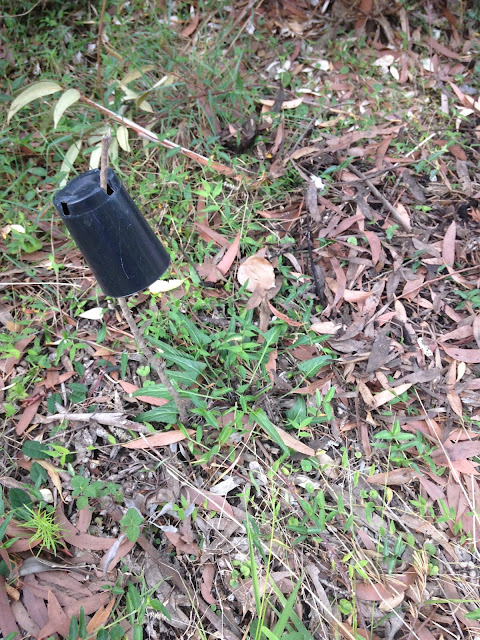There are a few things you can do to prepare your garden for the heat ahead. These are often stated, but worth repeating - it only takes one nasty hot dry spell to damage some plants beyond recovery.
Mulch mulch mulch!
Make sure you have a decent layer of mulch (around 5cm deep) across the garden to reduce evaporation. Some people suggest keeping it away from the drip zone of plants, but I don't bother and haven't had a problem with that approach. I tend to use eucalyptus leaf mulch collected from round the property and nearby, which is probably freer draining than some other mulches. This means water tends to flow through it to the plant's roots rather than being held in the mulch itself.
Keep in mind though that mulch, particularly dry eucalyptus mulch, is quite flammable, so if you're in a fire risk zone don't use it close to the house.
Water, water, water!
Do this only within reason, of course, and keep in mind all the other factors: recent rainy or cool conditions may mean there is still good soil moisture, and established local natives are generally OK to cope with most hot spells. It is mostly the newly planted, out-of-area and struggling plants that may need some extra TLC.
 |
| Seedling trays usually need very regular watering even in normal conditions. In a heatwave, it may be worth checking them twice a day. |
 |
| Small pots, particularly ones that contain well-grown plants, need particular attention in heatwaves. Image by Emma Rooksby. |
This is a tip I learned from Bushcare friends. The larger and more crowded your garden, and the more plants you have, the more important it is to mark anything that will need extra TLC. Not pretty - but effective! And I'm sure it wouldn't be hard to come up with something more appealing if you're so inclined!
 |
| This cute little Showy Violet (Viola betonicifolia) is very very tough when established, but new plants may need a helping hand for a few weeks. Image by Emma Rooksby. |
Much time, water and grief can be avoided by situating plants in the right spot in the first place. Understanding your soil and the way water flows through it is really important to work out what plants will grow best where. Dry sandy soil and exposure to north and westerly sun and winds will require much tougher plants than damp, loamy or clay soil and sheltered conditions.
Choosing local native plants is always a good first step, but even then our local species are adapted for the wide range of local conditions, from exposed sandy and rocky spots to wetlands and marshes, and the volcanic outcrops and sheltered escarpment sites that support amazing rainforest.
Another tip I can share (from bitter experience) is that road verges can be very tough places to grow almost anything. They are often in full sun, cope with lots of foot and wheel traffic and many have outstandingly poor soil. Try only the toughest plants in those conditions and be prepared for some losses even then.
 |
| The far corner of the verge - hot, dry, far from a hose - and subsequently a very barren little spot! Image by Emma Rooksby. |







No comments
Post a Comment